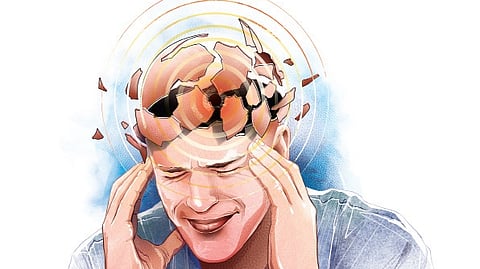

Epilepsy, a neurological disorder characterised by recurrent seizures, affects approximately 50 million individuals worldwide. In India, at least 10–12 million people are affected. Despite its prevalence, the country is experiencing a considerable treatment gap (TG) in the management of epilepsy, particularly in rural areas.
The TG can be attributed to various factors, including limited awareness of anti-epileptic drugs (AEDs), cultural beliefs, social stigma and inadequate healthcare infrastructure. In India, the TG ranges from 22 per cent in urban areas to a staggering 90 per cent in rural regions, emphasising the urgent need for improved access to care and awareness campaigns.
Causes of epilepsy are diverse such as structural changes in the brain, genetic predispositions, infections, metabolic disturbances, immune-related factors, and in many cases, unknown origins. In India, neuroinfections, head trauma, and metabolic abnormalities contribute significantly to epilepsy.
Tragically, individuals with epilepsy face a heightened risk of premature death, reducing life expectancy by 2–10 years on average. Common causes of mortality include injuries, sudden unexpected death in epilepsy (SUDEP), status epilepticus, infections, drug toxicity, and suicide, underscoring the importance of care beyond seizure control.
Special attention must be given to women of reproductive age with epilepsy, as pregnancy poses unique challenges. Issues such as teratogenesis from AEDs and increased infertility rates are significant concerns. Epilepsy is also a prevalent condition in children, with the highest incidence occurring in the first year of life and peaking between ages 1 to 12.
Seizures manifest in various forms. Generalised seizures affect the entire brain and may present with symptoms such as body stiffening and loss of consciousness. Focal seizures comes with symptoms such as alterations in sensory perception to loss of awareness and repetitive movements.
Accurate diagnosis of epilepsy relies on a comprehensive and neuroimaging studies such as electroencephalogram (EEG) and brain scans. While EEG remains the cornerstone of diagnosis, advanced techniques like high-density EEG and stereo EEG provide valuable insights.
Preventive measures play a crucial role in reducing the burden of epilepsy, with strategies focusing on fall prevention, injury prevention, and improved perinatal care. Addressing modifiable risk factors such as cardiovascular risks can also prevent epilepsy. Treatment options for epilepsy include medicinal and surgical interventions, brain-stimulating therapies, and dietary modifications. However, a significant proportion of cases remain drug-refractory, highlighting the need for alternative therapies and medicine tailored to individual patients.
Surgical intervention offers hope for seizure control in such cases, with approximately 50% of such cases being surgically treatable. Despite the proven efficacy of epilepsy surgery, its utilisation remains suboptimal in India.
Addressing epilepsy requires concerted effort from healthcare, policymakers, to ensure a better quality of life for people affected by this condition.
Dr Siby Gopinath
The writer is a clinical neurologist and epileptologist at Amrita Hospital, Kochi